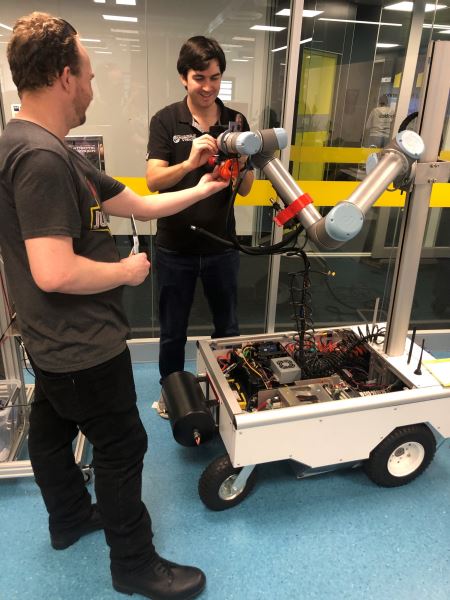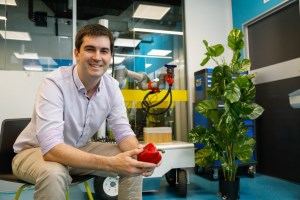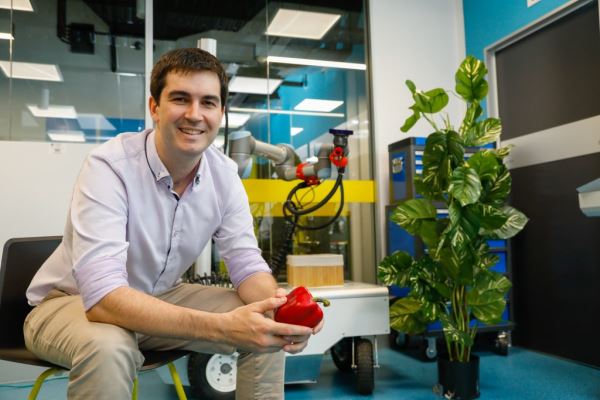Australian researchers are developing a new crop monitoring and automation robot to help farmers effectively monitor their crops, reduce loss and improve the quality of produce.
The new concept is building on the success of Harvey, an agricultural robot prototype that was designed to robotically identify and harvest capsicums.
ARC Centre of Excellence for Robotic Vision Associate Investigator Dr Chris Lehnert and his team developed Harvey last year – and they’re now taking his talents one step further.
This follows feedback from local growers who needed a platform that could support a variety of activities like crop monitoring and decision-making before performing tasks like harvesting and pruning.
“We are focusing on an automation platform that makes it easy to add new features as we go,” said Dr Lehnert.
“Autonomous crop monitoring would be a key feature as it has value for the grower in being able to inform about whether their crop is growing well or if there are nutrient deficiencies or diseases that need to be addressed immediately.
“We are interested in looking at optimal decision-making methods so if the platform was autonomous it could undertake actions such as pruning, spraying pesticides or harvesting.
“The goal is to build a fully autonomous crop management system that will help the agricultural industry reduce the risk of crop loss and improve productivity by having the right information to make better decisions.”
Harvey was recently dismantled, and parts will be used to make this new and improved robot that will have a modular design for different robot sensors and arms to fit onto and a lightweight body for easy transport and deployment.
It will also be easily replicated into different lengths and sizes to be used for varying applications.
While testing will be done on capsicums the team are also speaking to tomato growers who are keen to have a higher yield for cost and better quality of crop.
“We are designing this robot from the ground up so it can navigate on both concrete flooring and autonomously transition to a pipe rail system to move down a row,” said Dr Lehnert.
“We are focused not just on the mechanical design but also the software needed to execute the behaviour to better support our agricultural industry.”


